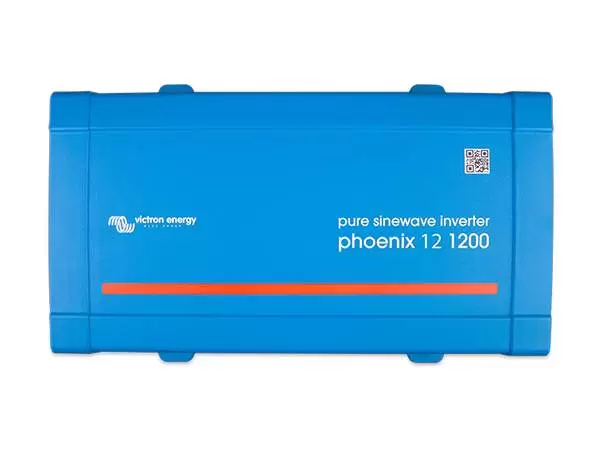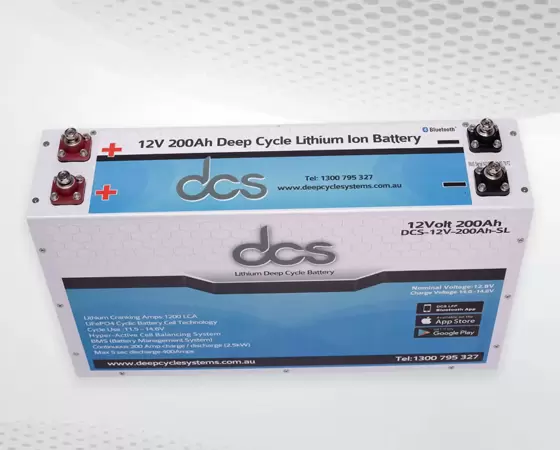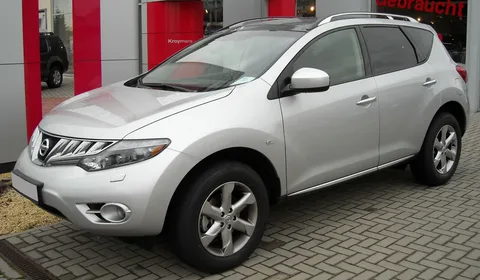Imagine a world where your energy consumption is optimized, costs are reduced, and the environment benefits. Enter the realm of DC inverter technology—a game-changer in how we power our devices and manage energy at home. This advanced technology is not just a trend; it’s rapidly becoming essential for anyone looking to maximize efficiency while minimizing their carbon footprint. From air conditioning systems that cool your space more effectively to innovative setups transforming solar energy into usable power, Dc-inverters play a crucial role. They bridge the gap between traditional methods and modern needs, ensuring you save money without sacrificing comfort or quality. Curious about how this all works? Let’s dive deeper into the fascinating world of Dc-inverters and discover what makes them so vital in today’s tech-driven lifestyle.
Table of Contents
Understanding Dc-inverter Technology: How It Powers Modern Devices
Dc-inverter technology has revolutionized the way we power our devices. It transforms direct current (DC) into alternating current (AC), making it essential for various applications. This process enhances energy efficiency while ensuring a stable power supply. Modern appliances rely on this technology to function optimally. For instance, air conditioners and refrigerators use Dc-inverters to adjust their compressor speeds based on real-time conditions. This allows them to consume less electricity by operating only as needed.
Moreover, Dc-inverters contribute to the longevity of devices. They reduce wear and tear on components by providing consistent voltage and minimizing fluctuations. As a result, users benefit from improved performance and lower maintenance costs. The integration of Dc-inverter technology is evident across industries—from renewable energy systems like solar panels to everyday household items—showcasing its versatility in powering modern life effectively.
What Is a Dc-inverter? Understanding Its Technology
A Dc-inverter is a sophisticated device that converts direct current (DC) into alternating current (AC). This conversion is crucial for powering various home appliances and electronic devices. Unlike traditional systems, which operate at a constant speed, Dc-inverters can adjust their output based on real-time energy needs. This technology enhances efficiency by modulating the power supply. It does this through advanced circuitry that enables smoother operation without abrupt fluctuations.
As a result, it consumes less energy while maintaining optimal performance. Dc-inverters’ versatility extends to renewable energy applications as well. They play a vital role in solar panel systems by converting stored solar energy into usable AC power for household use. With their growing adoption across different sectors, understanding how they work has never been more important for eco-conscious consumers seeking sustainable solutions.
The Role of DC to AC Inverter in Home Energy Systems
DC to AC inverter plays a crucial role in home energy systems by converting direct current (DC) from renewable sources into alternating current (AC).
Powering Household Appliances
Most household appliances and electronics operate on AC power. Renewable energy sources such as solar panels and wind turbines produce DC power, which must be converted into AC for home use. DC-to-AC inverters make this conversion possible, allowing homeowners to use clean energy to power their daily activities.
Grid Connection
Home energy systems that generate excess electricity can be connected to the grid through a DC-to-AC inverter. This allows homeowners to return their excess energy to the utility company, reducing their energy bills and promoting renewable energy adoption.
Backup Power
In a power outage, DC-to-AC inverters can also act as backup generators by converting stored DC power from batteries or other sources into usable AC power for essential appliances and devices.
Energy Management
Advanced DC-to-AC inverters have built-in monitoring and control features that allow homeowners to manage their energy usage efficiently. They can monitor how much electricity is generated and consumed, set timers for specific appliances, and even remotely shut off non-essential devices.
Cost Savings
Homeowners can save money on electricity bills by using renewable energy sources and efficient DC-to-AC inverters in the long run. They can generate their power and reduce their dependence on the grid, subject to fluctuating energy prices.
Dc-inverter Air Conditioners: Are They worth the Investment?
Dc-inverter air conditioners have become increasingly popular for homeowners looking to enhance their energy efficiency. These systems operate differently than traditional AC units, adjusting the compressor speed based on the cooling demand of a space. This means they can maintain a consistent temperature without constantly turning on and off, leading to significant energy savings over time.
While the initial investment in a Dc-inverter air conditioner may be higher than that of conventional models, many users find that the long-term savings on utility bills offset this cost. These units are generally quieter and provide more comfortable indoor climates by eliminating temperature fluctuations. Moreover, technological advancements mean these systems have longer lifespans and require less maintenance than standard air conditioning options.
With rising energy costs and increased awareness of environmental impacts, many consumers value products that contribute positively both economically and ecologically. For those considering upgrading their HVAC system or installing new cooling solutions, investing in a Dc-inverter unit could be beneficial for comfort and financial reasons down the line. The decision ultimately depends on individual needs, budget considerations, and long-term goals related to home energy efficiency.
DC to AC Power Inverter: How It Works and Why You Need It?
DC to AC power inverter is essential components of modern energy systems. They convert direct current (DC) from sources like solar panels or batteries into alternating current (AC), which powers most home appliances. This conversion is crucial for maximizing the efficiency of renewable energy systems. The process begins when DC electricity enters the inverter. It then uses electronic circuits to switch the direction of the current, creating a smooth wave output that mimics traditional AC power. As a result, your household devices can operate seamlessly without interruption.
Why do you need a DC-to-AC power inverter? If you’re considering using solar energy or have battery storage solutions, an inverter bridges the gap between stored energy and everyday use. It ensures that renewable resources are utilized effectively, reducing reliance on fossil fuels and lowering utility costs. Investing in a quality DC-to-AC power inverter enhances your home’s energy efficiency and contributes positively to environmental sustainability. By harnessing advanced technology, you’ll enjoy consistent performance while cutting down on unnecessary waste and expenses associated with conventional power sources.
Dc-inverter vs. Traditional Systems: Key Differences Explained
The differences between Dc-inverters and traditional systems are striking. Traditional air conditioning and heating systems often operate on a fixed-speed compressor, which means they can only run at full capacity or not at all. Such an approach leads to frequent cycling on and off, which consumes more energy. On the other hand, Dc-inverter technology allows for variable-speed operation. It adjusts the compressor’s speed based on real-time demand, optimizing energy consumption. This results in less wasted energy and lower utility bills.
Moreover, Dc-inverter systems generally provide better temperature control and enhanced comfort levels within your home. They maintain a consistent temperature without those uncomfortable fluctuations common with traditional units. Noise is another area where these technologies diverge significantly. While many conventional units can be quite loud during operation due to their abrupt start-stop cycles, Dc-inverters tend to run much quieter thanks to their smoother operating process.
Another aspect worth noting is the environmental impact. The efficiency of Dc-inverter technology translates into reduced greenhouse gas emissions over time compared to older models reliant on constant high power outputs. Ultimately, choosing between a Dc-inverter system and traditional options hinges on what you value most—energy savings versus upfront costs or long-term efficiency against short-lived performance benchmarks. Whichever route you choose will undoubtedly shape your home’s comfort level.
A Comprehensive Guide to Choosing the Right Dometic Inverter
Several factors should guide your decision when choosing the right Dometic inverter. First, consider your energy needs. Assess the devices you intend to power and their wattage requirements. This will help narrow down the options. Next, look at the efficiency ratings of different models. A higher efficiency rating typically translates into lower energy costs over time. It’s also wise to check for features such as automatic voltage regulation and overload protection, which can enhance safety and performance.
Portability is another aspect worth examining if you’ll use the inverter in various locations or during outdoor activities like camping or raving. Lightweight designs often come with carrying handles for convenience. Be aware of customer reviews and warranties offered by manufacturers. These insights provide valuable information about reliability and service quality after purchase. Considering all these factors ensures you choose a Dometic-inverter that meets your needs while maximizing energy efficiency on residential and adventurous outings.
The Science behind Dc-inverter Efficiency in Electrical Systems
The efficiency of Dc-inverter technology is rooted in its unique ability to control power usage effectively. Unlike traditional systems, which operate at a fixed speed, Dc-inverters adjust their output based on energy demand, creating a more balanced and efficient operation. This system’s heart lies in converting between direct current (DC) and alternating current (AC). The DC-to-AC inverter plays an essential role by allowing devices to use electricity from renewable sources such as solar panels or batteries efficiently.
As such, these inverters can optimize energy consumption while reducing waste. Moreover, advancements in semiconductor technology have significantly enhanced the performance of DC converters. They enable better voltage regulation and reduce harmonic distortion, improving overall efficiency across electrical systems. Understanding how these factors contribute to energy savings can help homeowners make informed decisions about integrating advanced technologies into their homes or businesses.
Investing in quality Dc-inverter solutions promotes sustainability and leads to substantial long-term cost savings on utility bills. Ultimately, embracing Dc-inverter technology paves the way for smarter energy management that benefits users and the environment. With ongoing innovations continually improving this field, it’s clear that maximizing energy efficiency through these advanced systems is not just a trend but a necessary evolution toward sustainable living.
Conclusion
As we navigate the evolving energy efficiency landscape, understanding DC inverter technology becomes essential. This innovation significantly impacts how we power our homes and devices. Embracing this technology means embracing a sustainable future. Its benefits extend beyond mere energy savings; it also contributes to reducing our carbon footprint. The versatility of Dc-inverters opens doors for modern solutions across various applications. They optimise performance from air conditioning systems to renewable energy setups while maintaining lower operational costs.
FAQs
What is a DC to AC inverter, and how does it work?
A DC to AC inverter converts direct current (DC) into alternating current (AC). It uses advanced technology to optimize energy usage in various appliances, making them more efficient. Adjusting the output frequency and voltage ensures a consistent power supply.
Are Dc-inverter air conditioners worth the investment?
Yes, due to their efficiency, they often lead to significant savings on electricity bills. While the initial cost may be higher than traditional models, their long-term benefits justify the expense. They also provide better temperature control and quieter operation.
How do I choose the right Dometic-inverter for my needs?
Consider your power requirements first. Evaluate what devices you need to run simultaneously. Next, check compatibility with your existing electrical systems and look for features such as surge protection or build quality that match your lifestyle.
Can a Dc-inverter improve home energy management?
Absolutely! A well-designed DC-to-AC inverter can enhance overall energy efficiency in homes by managing loads intelligently and reducing wastage during operation.
Is there a difference between an off-grid and a grid-tied inverter?
Yes, off-grid inverters are designed for standalone systems that are not connected to the main electric grid, while grid-tied inverters connect directly to utility lines. Each serves different purposes based on individual needs or backup plans against outages.



